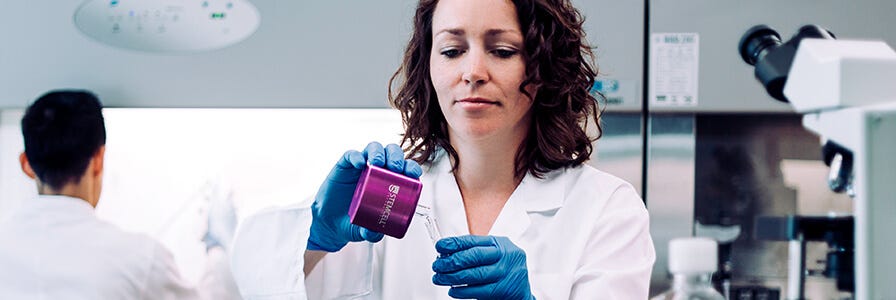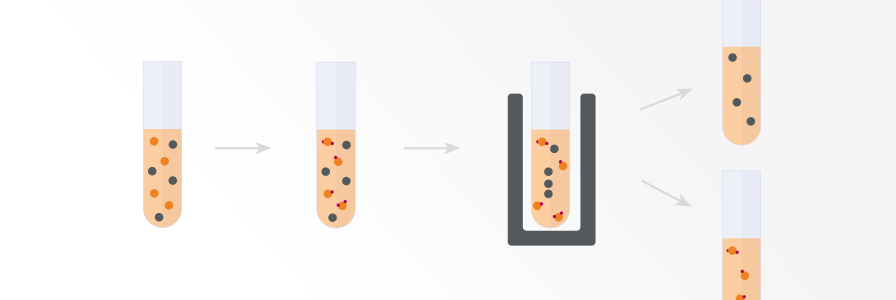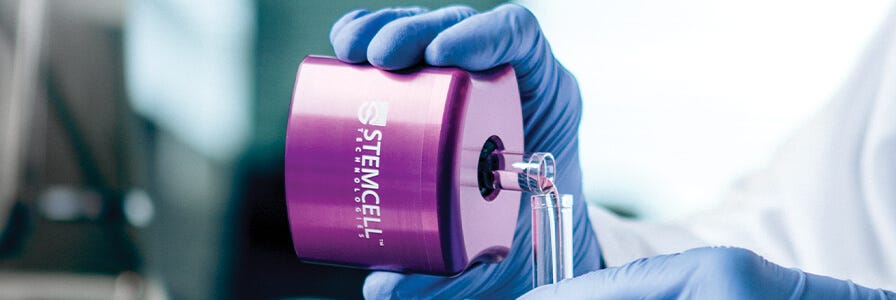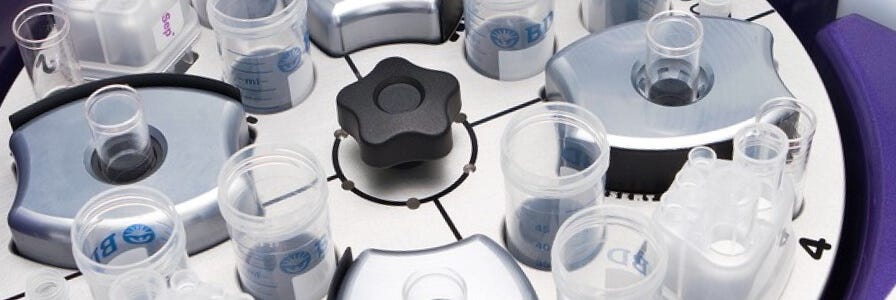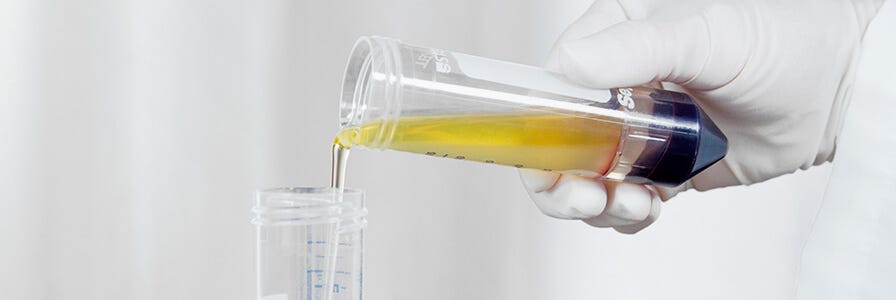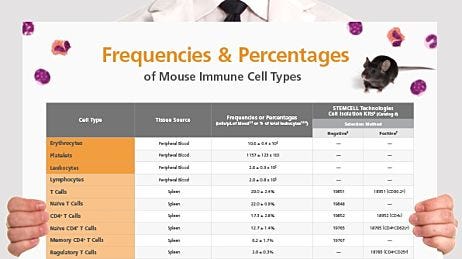Cell Separation Techniques: Everything You Need to Know About Cell Isolation
Cell biology is complex, given the multitude of variables that researchers must be aware of and account for in order to obtain meaningful results. Conducting experiments on an isolated population of cells, rather than a heterogeneous mixture of cells, is a common approach to reduce experimental complexity. This allows cell biologists to confidently attribute observed effects and responses to a particular cell type. Thus, mastering the basic techniques of cell isolation is a valuable skill for any cell biologist. Here is everything you need to know about cell separation.
What is cell separation?
Cell separation, also commonly referred to as cell isolation or cell sorting, is a process to isolate one or more specific cell populations from a heterogeneous mixture of cells. There are a number of cell separation methods available, each with its own pros and cons.
Why do scientists isolate cells?
Conducting experiments on isolated cells allows scientists to confidently answer specific research questions by minimizing interference from other cell types within the sample. Isolated cells have many applications within life science research, allowing scientists to:
- Conduct molecular analysis of a single cell type, including RNA expression and epigenetic analysis
- Genetically modify and expand a particular cell type of interest for disease modelling or cell therapy research applications (e.g. T cell therapy research)
- Directly use purified cells for adoptive cell transfer experiments in various animal models
- Increase sensitivity of analytical methods (e.g. cell isolation for HLA analysis, cell isolation for FISH analysis)
- Study the in vitro effects of drug candidates on specific cell populations (e.g. hematotoxicity testing)
- Fuse enriched plasma cells with myeloma cells to produce hybridomas
See how scientists are using isolated cells in different areas of immunology research >
How do scientists prepare samples for cell separation?
There are many different ways to prepare samples for optimal cell isolation. The method you select depends on your starting sample and may involve removing certain elements from it or simply creating a single-cell suspension.
Cell separation can be performed on a variety of complex biological samples, including:
- Whole peripheral blood
- Leukapheresis products (e.g. Leukopaks)
- Peripheral blood mononuclear cells (PBMCs)
- Bone marrow
- Cord blood
- Spleen and lymph nodes
- Other tissues (e.g. skin, liver, lung, fat, brain, tumor, etc.)
Isolate cells from blood
A detailed overview of methods to isolate different cell populations from blood samples.
Isolate cells from tissues
Methods to isolate cells from tissues such as spleen and lymph nodes.
What cell separation methods and techniques are available?
There are many different ways to isolate cells from complex biological samples. Common characteristics used to isolate cells include cell size, cell density, cell shape, and surface protein expression. The most common cell separation techniques include:
- Immunomagnetic cell separation
- Fluorescence-activated cell sorting (FACS)
- Density gradient centrifugation
- Immunodensity cell isolation
- Microfluidic cell sorting
There are also less commonly used cell separation methods, including buoyancy-activated cell sorting, aptamer-based cell isolation, complement depletion, and more.
View all cell separation techniques >
Choosing a cell separation method that meets your research needs
Learn more about the cell separation methods outlined above to choose the best method for your application.
Choosing a positive or negative selection approach
Read more about antibody labeling-based cell isolation methods, including immunomagnetic and immunodensity cell isolation.
Some methods can be used in combination to increase efficiency and improve cell isolation performance. For example, cells can be pre-enriched using immunomagnetic cell separation prior to fluorescence-activated cell sorting (FACS). This can be especially useful when isolating rare cell populations (e.g. pre-enrichment of innate lymphoid cells (ILCs) prior to flow sorting) or specific subsets within a given population.
How do you choose the best cell separation method for your research?
There are several factors that can be used to determine which cell isolation method to use. Depending on the intended downstream application for the isolated cells, scientists should consider the performance (i.e. purity and recovery) and efficiency of the cell separation method, as well as the viability and function of the isolated cells.
Performance
The key measures of performance for cell separation methods are typically purity and recovery.
- Purity refers to the proportion of desired cells in the final isolated cell fraction, and is generally expressed as a percentage of total live cells. Purity is most commonly measured using flow cytometry. It indicates whether the final isolated cell population can sufficiently represent the characteristics of that particular cell type without the interfering effects of other cell types.
- Recovery answers the question: out of all the desired cells you can possibly obtain from your sample, how many are you actually able to isolate? Conversely, how many of your desired cells have you lost through your cell separation method? Learn how to assess recovery from cell isolation procedures >
Viability and Function
Both viability and function of isolated cells are important when researchers need live, purified cells for downstream cell culture and other applications.
- Viability can be expressed as the percentage of total cells in the isolated sample that are live.
- Function of the cells you isolate should be preserved throughout the cell separation process to ensure that your downstream assays accurately represent the physiological function of your cell type of interest.
Efficiency
Scientists often work long hours and juggle multiple projects at a time. Choosing efficient methods will help you overcome the demands of scientific research and accomplish more in less time. Throughput, speed, ease-of-use, and automation are all important variables to consider for maximizing the efficiency of your cell isolation.
- Throughput refers to the rate at which cell separations can be completed in terms of sample volume, number of cells, or number of samples. If you’re working with large sample volumes or multiple samples at a time, you will want to consider which cell separation technology can support your desired throughput.
- Speed refers to the amount of time it takes to complete the cell isolation procedure. Faster cell separation protocols are desirable if you need to increase your throughput and accomplish more with your time in the lab. Some of the fastest cell isolation kits can isolate highly purified cells in as little as 8 minutes.
- Ease-of-use contributes to the reliability and reproducibility of a cell separation method. Simple protocols are key to reducing user-caused errors and variability.
- Automation can reduce variability, limit the amount of hands-on-time required, and allow you to do more with your time in the lab. Automated cell separation instruments also reduce the risk of exposure to dangerous pathogens when working with potentially infectious samples.
Evaluation criteria for cell separation methods
There are many parameters that you can consider when choosing the right cell isolation method for your research.
Efficient cell separation technologies
We recommend that you choose cell separation technologies that will help you maximize efficiency while giving you the highly purified, functional cells you need for your research. Smarter, well-designed technologies will allow you to accomplish more with your time in the lab.
The following are some of the cell isolation technologies that we’ve developed with efficiency in mind:
EasySep™ Immunomagnetic Cell Separation
Isolate cells with a simple pour, in as little as 8 minutes.
RoboSep™ Automated Immunomagnetic Cell Separation
Isolate cells from up to 16 samples at once with minimal hands on time.
RosetteSep™ Immunodensity Cell Isolation
Isolate human cell subsets directly from whole blood during density gradient centrifugation.
For researchers needing an efficient technology for isolating specific cell types from various sample sources, we recommend trying our EasySep™ immunomagnetic cell separation technology.
My experience with the EasySep™ was seamless. The protocol is simple & quick, almost too easy, and has allowed me to successfully isolate my cells of interest with high purity. This gives me extra time to do other experiments and confidence in my data.
I do not have experience with other cell isolation products but I have no need to look elsewhere now as the EasySep™ is simple and does the job to perfection!
Matthew Cormier, PhD Candidate


